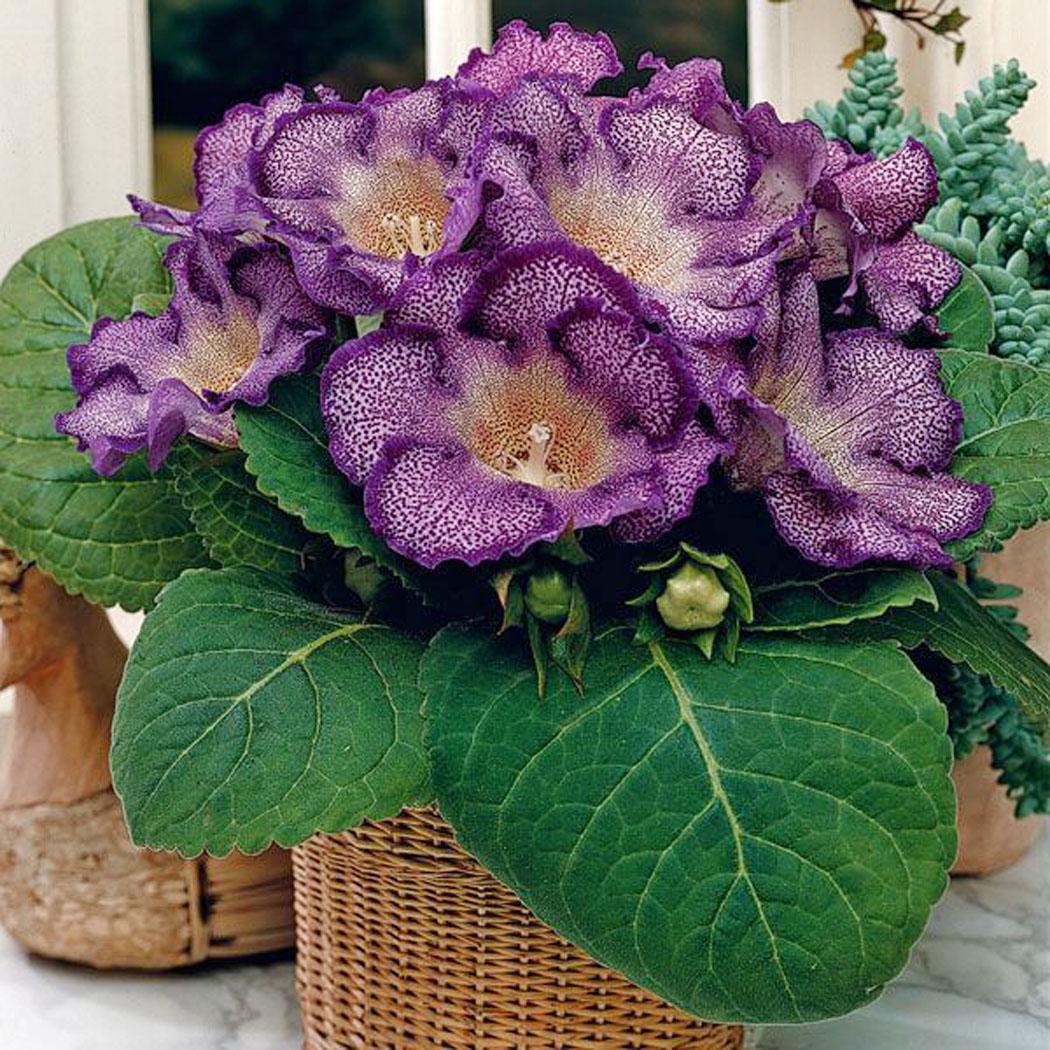Gloxinia leaves curl - what to do
Content:
The advantage of gloxinia is its attractive appearance, not only during the flowering period, but also as a landscaping of the windowsill. One of the common problems during cultivation is leaf curling. When gloxinia leaves curl, you need to know what to do so that the plant does not die.
What Gloxinia Leaves Look Like
Gloxinia leaves are oval, dense. The outer surface is velvety, pleasant to the touch. The color is dark green, covered with veins, which gives the impression of a pattern. In an adult plant, the leaves are slightly lowered down.
The main causes of leaf curling
If gloxinia leaves curl, you need to know what to do in such a situation, otherwise it can lead to a lack of color and death of the flower. The reasons can be varied and associated with both improper care and the appearance of pests.
Temperature regime
One of the reasons why gloxinia leaves curl inward is the wrong room temperature.
Leaves can wrap up as a result of an increase or decrease in temperature. For growing crops, the optimal range is +19 .. + 22 degrees. Any change leads to deformation.
Dry air
Another reason why gloxinia leaves curl and deform is excessively dry air.
Such problems are most common in winter. Especially if the plant is grown on a windowsill near heating appliances. Often twisted leaves begin to dry and fall off. To treat such a plant, it is necessary to regularly spray with water.
Drafts
Frequent drafts can lead to the fact that the leaf is deformed and curled up. The plant is very sensitive to sudden gusts of air. Therefore, it is necessary to place the pot in a protected place on the windowsill.
Watering
Leaves may curl if watered incorrectly. Also, another symptom of improper watering can be the appearance of dry spots.
Often during watering, the water does not sufficiently moisturize the soil in the pot and accumulates only in the upper layer. After removing the plant from the container, you can see the damaged tuber.
In order to prevent such a problem, it is necessary to place the pot on a tray of water. The plant will independently distribute the required amount of moisture for growth.
Sunburn
Direct sunlight can curl the leaves. Gloxinia leaves are very sensitive and in the summer it is necessary to shade the bush.
Also, when exposed to sunlight, dark spots may appear, which reduce the external decorative characteristics of the culture.
Pests
Parasites can curl the leaves on the plant. Among the most common pests, the following should be noted:
- Cyclomene mite is a small insect that most often settles on a bush and feeds on sap. After the plant is damaged by a large number of mites, the leaves begin to curl. To combat insects, it is necessary to use the drug Aktelik.
- Thrips - externally, the pest looks like a small compaction. Over time, light spots appear on the leaves of gloxinia. The leaves of the culture begin to curl and dry out. To combat thrips, it is necessary to use the Aktara insecticide.
Pests noticed in a timely manner are easily treatable without harm to the culture.
Prevention - what to do
Why do gloxinia leaves curl, what to do to prevent the problem? The answer to this question lies in the right prevention. In the process of caring for a plant, you should adhere to the following rules:
- Watering the bush after the soil has begun to dry will reduce the risk of rot. However, watering should be carried out during the flowering period at least once every 4 days.
- Transplant the tuber into a new soil every year. Such actions strengthen the plant and saturate the tuber with useful elements.
- In summer, move the flower pot to the shade.
- Feed the plant with complex fertilizers to form strong immunity.
It is also necessary to carefully examine the leaves of the bush for changes. Once a week, wipe the houseplant with damp cotton wool.
Growing gloxinia is easy. In order to get a plant that blooms for a long period, you need to follow simple care methods and choose the right place for the flower pot.




















